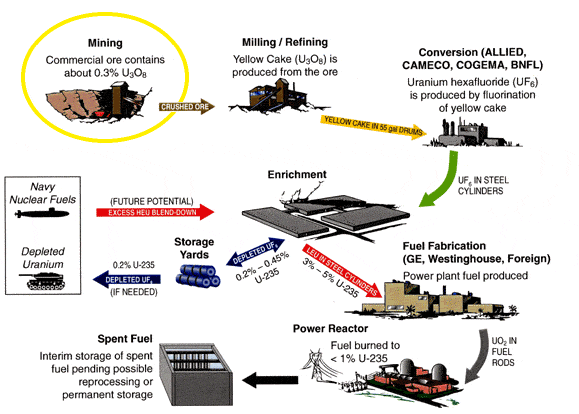Following the nuclear disaster at Fukushima in March of 2011, the price of uranium plunged as reactors with turned off in several countries and new reactor projects were suspended across the world. By 2014, the price of uranium had fallen from sixty dollars a pound to twenty eight dollars a pound which was a nine-year low. Currently there is a global surplus of up to twenty seven million pounds.
The price of some major commodities has fallen in the last year due to oversupply, slowing of Chinese economic growth and monetary tightening in the U.S. Crude oil, the commodity that is traded the most lost thirty five percent of its value this year. Copper, which is a benchmark for commodities fell twenty six percent while gold went down almost ten percent.
The price of uranium has been slowly recovering this year against the other falling commodities because the international climate agreement that was just signed in Paris which supports nuclear power to reduce carbon emissions. There is also a growing demand for nuclear power in Asia. Nuclear power supplies about eleven percent of the world's electricity but that share is projected to rise as China and India expand their nuclear fleets.
China is suffering horrible air pollution from the burning of coal. In an attempt to reduce coal use, China plans to build up to eight nuclear power plants a year for the next five years.
India currently generates about four percent of its electricity from nuclear power. In an attempt to eliminate severe power outages and meet the unfilled demand for electricity, India wants to generate twenty five percent of its electricity from nuclear power plants by 2050.
Japan turned off all of its forty six nuclear power reactors following the nuclear disaster at Fukushima. It is slowly restarting about thirty of its forty six nuclear power reactors while planning to decommission the rest.
In the United States, rising demand and strategic stockpiling of uranium saw the spot prices paid by U.S. utilities for uranium increase eighteen percent over the past years, from and average of thirty three dollars a pound to thirty nine dollars a pound. The United States is the world's biggest consumer of uranium followed by France and China.
Kazakhstan is the largest producer of uranium in the world followed by Canada and Australia. Kazakhstan has just signed a deal with some Chinese companies to build a nuclear fuel plant in Kazakhstan. (Public protests shut down an attempt to build a fuel processing plant in China.)
Cameco, the Canadian company which is the world's biggest uranium mining company, has just signed a five year contract to supply uranium to nuclear power reactors in India.
It is estimated that one hundred and fifty million pounds of uranium were consumed in 2015. It is projected that this will rise almost to 200 million pounds per year by 2020.
As the global number of operating nuclear power reactors rises, the demand for and price of uranium will also rise. Merrill Lynch and BMO Nesbitt Burns forecast that uranium may rise as high as sixty dollars a pound by 2018. While the Chinese and Indian nuclear plans may be over ambitious, investing in uranium will be profitable in the near future.
